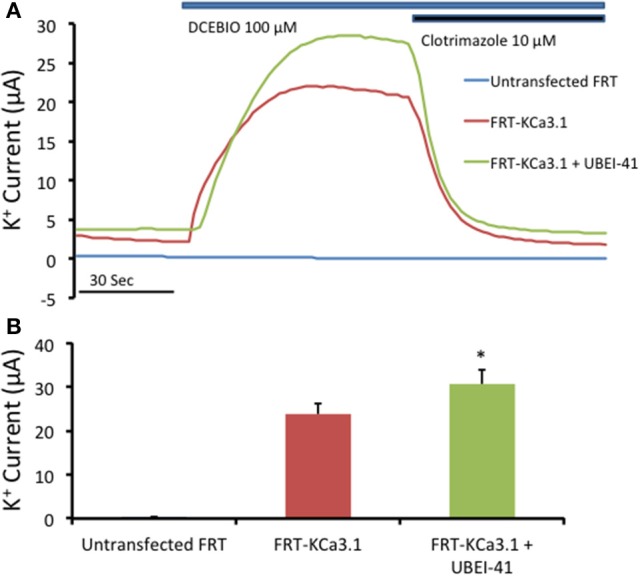Figure 5.

The effect of UBEI-41 on current of the KCa3.1-BLAP cells. (A) A representative trace of UBEI-41 treated FRT-KCa3.1-BLAP cell line. FRT-KCa3.1 cells were grown on Snapwell™ filter inserts then subjected to Ussing chamber experiments. The KCa3.1 specific activator DCEBIO (100 μM) was applied to the cells that stimulated a K+ current due to the opening of FRT-KCa3.1 channels. Clotrimazole (10 μM) was applied to inhibit KCa3.1 current. With the UBEI-41 (50 μM) treatment after 1 h, the DCEBIO sensitive K current was significant larger than the non-treated cells, with an averaged difference of 7 ± 1 μA. (B) Quantitation bar graph of the average DCEBIO sensitive K+ current of each tested condition. When stimulated with DCEBIO, control FRT-KCa3.1 cells exhibited an average current of 24 ± 2 μA (red bar) whereas current of UBEI-41-treated FRT-KCa3.1 cells was 31 ± 3 μA (green bar). Untransfected FRT cells did not respond to DCEBIO or clotrimazole (blue trace, Figure 5A). * UBEI-41 treated cells showed statistically significant (P ≤ 0.05, n = 4) increase of DCEBIO sensitive K+ current than non-treated cells.
